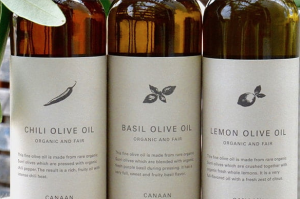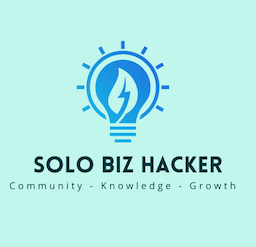There is currently a huge shift going on in the online business world, a shift that is being driven by the evolution of consumers and consumer expectations that has really taken place in only the last couple of years.
It is what we call the “Netflix difference”.
Does anyone watch cable anymore? I mean what kind of a business model is it when you have to spend at least $150 per month to get a whole bunch of channels you never watch, and when there is something you want to watch you have to be there at the time they say to watch it?
 Why do that when for $10 per month and an internet connection you can watch what you want to watch, when you want to watch it? That’s the “Netflix Difference”.
Why do that when for $10 per month and an internet connection you can watch what you want to watch, when you want to watch it? That’s the “Netflix Difference”.
Consumers are getting used to having more choice – and used to having their choices on-demand. As an online business owner you can ignore this trend at your peril – just don’t be surprised if you get run over by other business owners who have embraced the change.
 And that change is AI (artificial intelligence).
And that change is AI (artificial intelligence).
We’re not talking Skynet or killer robots here.
In business terms, we are talking about providing customers with a more tailored and personalized experience, providing them with what they are looking for, when they are looking for it. However, by utilizing the latest AI driven technologies you can do this auto-magically – combining analytics, email marketing and social media to get more visibility, convert more prospects into customers, and to get customers to buy more.
Sounds awesome, I hear you thinking, but I don’t have a clue how to do any of that! Don’t worry, you don’t have to struggle with this alone – there are people who know how to do this – like us.
So what kind of customer processes are we talking about – and how is this going to help my business?
There are basically only 3 ways to grow a business –
- Get more customers,
- Sell higher priced items to customers,
- Get current customers to purchase more frequently.
So let’s give you some examples of how AI driven data and autoresponder-based CRMs can help you with all three –
Click here for our free course on leveraging technology to get more visible and grow your business automatically |
Visibility
Some autoresponders (like Active Campaign) allow you to create a custom audience on Facebook based on the actions they take in your emails. So, for example, you can send out an email (and or SMS, if you have their phone number), and a Facebook Ad – to everyone who clicked a link in a previous email sending them to your web page about your retreat (you need a minimum of 100 people to create a custom audience).
You can also track where they are through any given sequence. So, for example, if they are doing your multi-part e-course and they finish the final lesson, you can send them a message through Facebook Messenger through Chat Bot saying “Congratulations on finishing the course! Have you thought about scheduling a Roadmap session with us?”
One of the benefits of your email service working together with Facebook is that you can engineer it so that people see you in multiple places – its all building those essential 11 touch points you need before someone takes notice of you.
Be Seen Everywhere
Retargeting is where you build an audience through people who have been pixeled by Facebook when they visit one or more of your website pages. Facebook ads can be targeted to people who have been pixeled, specifically. You have probably experienced the sensation yourself where you have been researching a product in Amazon only to have that product appear in an ad next time your visit your Facebook page – that’s ‘retargeting’ – and it is a vital component of making yourself visible on the web.
So, for instance, let’s say that you are doing an outreach campaign on LinkedIn. Not only are people seeing your messages and content on the LinkedIn platform itself, but you can download your contacts from LinkedIn and create a custom audience in Facebook and target them with Facebook Ads. You suddenly have jumped into their universe in multiple ways so that when you suggest getting on a phone call in your LinkedIn messaging, chances are they have seen you on Facebook too, are more aware of you and therefore more likely to accept that invitation. That is very different to just being seen in one place – eg. feeling like you are being bombarded by someone’s emails, or always seeing someone’s Facebook Ads in your stream. The trick is to be seen in multiple different places rather than too much in just one place.
The beauty of retargeted ads is that they are a lot less expensive than normal ads – you just need a minimum of 100 pixeled people for it to work.
So then these individuals may well have have seen the information on your website, on Facebook – and they will probably get an email too, if they are on your email list; LinkedIn if they come from a LinkedIn messaging campaign, and maybe other social media, such as Twitter, Instagram, Pinterest etc. It is in that way that you achieve the multiple touch points – and a lot of that can be automated – and tracked (see below).
That automation can then be set up to take them out of that custom audience and/or email promo sequence at anytime they make a purchase of that product. That way you don’t keep bombarding them with ads and emails when they have already bought the product.
You can then go on to create a target audience of the people who bought the product and target THEM with ads for another product in your line, or an accessory to the first product – as an upsell to that audience. Remember, it is far easier to sell to a customer who has already bought something from you than it is to sell to a new customer.
Prospect Segmenting
When someone first subscribes to your list via an optin offer, you should take the time to get to know them – and also to get them in the right segments in your list.
So your first email after a sign up might be “Hi, thank you for signing up – here’s a little bit about us, here’s what to expect from me, I’d love to learn little bit more about you so I can better help you with what you need….” This will allow you to collect valuable information about your new prospect.
It can be as simple as ‘reply to this message’, maybe with an automation to ask them again if you haven’t heard back from them in a certain time – or it could be setting a series of questions with links to blog posts so you can track what they are interested in by what link they click on:
click here if you sell physical products …
click here if you sell information products …
click here if you sell one-on-one services …
So, for instance, if they indicate they sell physical products by clicking that link, in the next follow-up email (automated), you might talk about the problems that you see people selling physical products  having – which is a really personalized message – it is clear that you have taken notice of what the prospect is interested in.
having – which is a really personalized message – it is clear that you have taken notice of what the prospect is interested in.
This sequence is almost like doing a survey over the course of a couple of messages in order to get to know people better.
Customers like to feel that you are paying attention to them and it helps build that ‘like and trust’ with the customer. Nothing is more annoying to a customer than having bought a product, being continually targeted by emails and Facebook ads that are pitching them for the very same product. It makes them feel like no-one is paying attention to what they are doing.
As marketers, we may understand that it is a mass email going out to a whole list but, to the customer, that email is from you to him/her. And if there is anything off in your message to them in terms of where they are then that’s going to shoot down the trust and likability factor immediately. (There is nothing more annoying than to get emails pitching a product you already own!)
Some of the data that can be used for segmenting includes (but isn’t limited to):
How they got on your list (what lead magnets they’ve signed up for)
The pages they’ve visited on your site (if your autoresponder has site tracking)
The links they’ve clicked in your emails (this is a great way of getting demographic info)
The products they’ve purchased
The actions they’ve taken on your site (have they opened messages, shared your content…)
As you can see… the possibilities are endless. Plus, modern autoresponders, like Active Campaign, make it easy to create slight variations of messages to go out to different groups. This is called conditional content – and is a big timesaver.
Click here for our free course on leveraging technology to get more visible and grow your business automatically |
Another way to segment your audience is to use lead scoring.
Lead Scoring
Lead Scoring is the ability to assign a points value to different actions that your prospect takes. For example, you might assign 1 point if they visit a web page, 5 points if they share your content on social media, 10 points if they sign up for your free optin, 15 points if the purchase a small tripwire product, such as your book. Then you can create trigger points so that, for example, if they reach 20 points you know they must be interested in what you have to offer as they have taken more than 2 interactions with your online presence, so that triggers a particular automated email sequence based on their interests, and with the aim of getting them to purchase a higher priced item – all done completely automatically and trigger by a prospects interactions with your various web presences. You want to get people while they are interested in you – and before that interest wanders on to something – or somebody – else.
Another way that lead scoring can be very valuable in rewarding your very best customers – your evangelists – is to track the things they do and when they have done enough ‘things’ (per their lead score), it triggers some kind of reward – maybe a free mug, or tee-shirt, or even a coupon-based reward of some sort.
Customer service > upselling
This is the place where people leave the most money on the table. Business owners tend to be very focused on getting people to purchase, but then having got the sale they ignore the customer and move on to the next prospective sale.
As we said previously, it is, in fact, far easier to get someone to buy again, having previously spent money with you, than it is to get someone new to buy.
What well executed automation for customer service does is meets people where they are and helps them consume your product, helps them give feedback, and helps them move on to the next product and/or re-purchase.
So, for example, we have a client that sells flavored olive oil sourced from particular olive producers. The olive oil comes in fairly small bottles, when compared to supermarket brands, and she has calculated from customer’s experiences that one bottle usually lasts for about one month.
So her first message is “Hey, what did you think of the olive oil? Here’s a little bit about me and my olive farmers (it helps them feel good about the product choice they made), and while you are at it, if you would like to send an invitation for a friend to try it, here’s a 50% off coupon for them. It is a nice, customer-focused message – any customer would feel good about receiving that message.
A follow-on message might be “Hey, here’s my favorite salad dressing recipe for the oil flavor you purchased), again, this is where conditional content can vary depending on what they purchased) – AND which might include a particular mozarella cheese for which there is an affiliate partnership, so  she is making money on that too.
she is making money on that too.
Then, about week three, you send a message saying “Hey, hope you enjoyed the olive oil – are you ready for your next bottle yet – here’s a coupon for your next bottle?”
So even though it is an automated email sequence, because it is based on the specific product that they purchased, it feels very personal.
You can then go on to get deeper to learn more about the customer by asking questions in the message – “Are you using the olive oil mainly to dip? For salad dressings? Or for cooking? Each question might be linked to an appropriate recipe and by clicking on a particular link they can go into a new sequence that is more specific to that choice. So if they click on the salad recipe link they get more content pertaining to salad dressing recipes.
So the next message in the sequence might be “Hey, I know you can create some great salad dressings with {product they purchased } but you might be interested in this new flavor which makes some great salad dressings as well.
This kind of sequence is not something you build all at once and then you are done – it is something that is built over time from customer date and experiences with your products. But it will certainly create more upsell opportunities and repeat business by using such sequences = more revenue = more growth.
AI can help you gain visibility with more prospects, convert more of those prospects into customers (because you appear to know them better), and get those customers to both buy more AND refer more friends to you – all the ways to grow your business – and all done auto-magically.
The question is, are you going to be an online business that benefits from this new shift – or are you going to be one of those left behind.
Click here for our free course on leveraging technology to get more visible and grow your business automatically |
